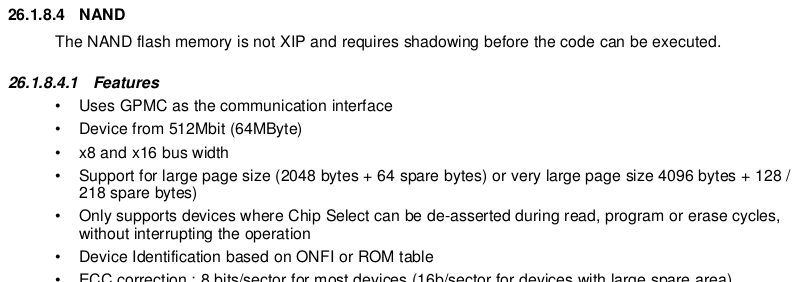Hello,
We are using am3352 with a SLC 8Gbit NAND flash. Now we need to include option for a 32Gbit NAND flash, but unfortunately we are not able to find a compatible NAND flash memry chip that fits the am335s requirements.
Main problem we are finding is pagesize, am3352 requires 2048/4096 pagesize, and available chips are 8192.
Could you please suggest compatible part numbers?
Our requirements are:
- Size: 32Gbit
- Temperature range: -40 to +85ºC
- One chip select
- 8-bit bus width
- TSOP48
- Technology: SLC preferred. MLC could be an option
Thank you for your help
Best regards
Angel



